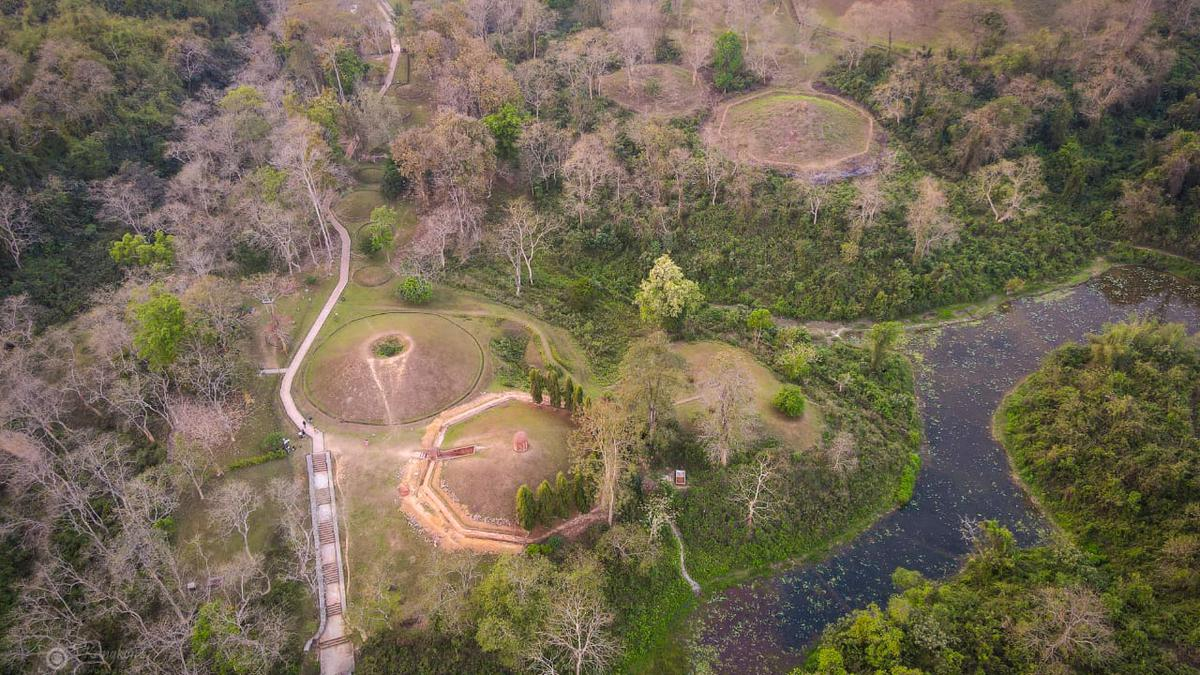Important Facts For Prelims
Assam’s Charaideo Moidams
- 24 Jan 2023
- 4 min read
Why in News?
The Centre has decided to nominate the Charaideo Maidams in Assam for the UNESCO World Heritage Centre this year.
- There is currently no World Heritage Site in the category of cultural heritage in Northeast India.
- The nomination of the Charaideo Maidams has attained significance at a time when the country is celebrating the 400th birth anniversary of Lachit Borphukan.
What is Charaideo Maidams?
- The Charaideo Maidams, represents the late medieval (13th-19th century CE) mound burial tradition of the Tai Ahom community in Assam.
- It enshrines the mortal remains of the members of the Ahom royalty, who used to be buried with their paraphernalia.
- After the 18th century, the Ahom rulers adopted the Hindu method of cremation and began entombing the cremated bones and ashes in a Maidam at Charaideo.
- Out of 386 Maidams or Moidams explored so far, 90 royal burials at Charaideo are the best preserved, representative of and the most complete examples of mound burial tradition of the Ahoms.
What are the Key Facts About Ahom Kingdom??
- About:
- Established in 1228 in the Brahmaputra valley of Assam, the Ahom kingdom retained its sovereignty for 600 years.
- The kingdom was founded by Chaolung Sukapha, a 13th century ruler.
- The Ahoms ruled the land till the province was annexed to British India in 1826 with the signing of the Treaty of Yandaboo.
- Political Setup:
- Ahoms created a new state by suppressing the older political system of the bhuiyans (landlords).
- The Ahom state depended upon forced labour. Those forced to work for the state were called paiks.
- Society:
- Ahom society was divided into clans or khels. A khel often controlled several villages.
- Ahoms worshipped their own tribal gods, yet they accepted the Hindu religion and the Assamese language.
- However, the Ahom kings did not completely give up their traditional beliefs after adopting Hinduism.
- Military Strategy:
- The full contingent of the Ahom Army consisted of infantry, navy, artillery, elephantry, cavalry and spies.
- The main war weapons consisted of bows and arrows, swords, Javelins discus, guns, match-locks and cannons.
- The Ahom soldiers were experts in guerilla fighting. They also learnt the technique of constructing boat bridges in the Brahmaputra.
- The full contingent of the Ahom Army consisted of infantry, navy, artillery, elephantry, cavalry and spies.
Who was Lachit Borphukan?
- Born on 24th November, 1622, Borphukan was known for his leadership in the Battle of Saraighat, 1671 in which an attempt by Mughal forces to capture Assam was thwarted.
- The battle of Saraighat was fought on the banks of the Brahmaputra in Guwahati in 1671.
- It is considered as one of the greatest naval battles on a river which resulted in the victory of Ahoms over the Mughals.
- He was the inspiration behind strengthening India’s naval force and revitalising inland water transport and creating infrastructure associated with it due to his great naval strategies.
- The Lachit Borphukan gold medal is awarded to the best cadet from the National Defence Academy.
- The medal was instituted in 1999 to inspire defence personnel to emulate Borphukan’s heroism and sacrifices.







